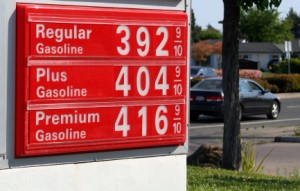Threats of oil heading for $250 or more per barrel have consumers rightfully scared. Gas prices nationwide are already flirting with record highs, and the national average price per gallon is expected to be $4 or more by June. With this kind of economic threat on the horizon, how can you prepare?
Some may advocate government action, but by the time the government gets done meddling with the situation, things may well be worse than ever. Remember that gas prices have risen rapidly each year Obama has been in office, and he’s supposedly proactive with his energy policies. It’s not good … and it’s not good enough for anyone serious about coping in the event of war with Iran, a national oil crisis, or some other unknown disaster leading to an oil shock. You need to identify realistic, practical solutions to an energy crisis that you can put in place anywhere in the country.
End Frivolous Driving
 The first response to skyrocketing oil prices is to end frivolous driving. You may think you’re already cutting back, but it’s nothing compared to what will need to happen when oil hits $250.
The first response to skyrocketing oil prices is to end frivolous driving. You may think you’re already cutting back, but it’s nothing compared to what will need to happen when oil hits $250.
Currently, studies show that 90 percent of driving miles are for work, shopping, or social reasons. Shopping and social outings are relatively simple to eliminate or consolidate, but when a true oil crisis hits, work miles will become much more flexible. Many businesses could do more with telecommuting or virtual meeting technologies, but they don’t presently have the motivation to try these systems.
Personally, you can also offload many driving miles by ordering online. Even some fresh grocery items can be shipped from Amazon, Wal-Mart, and other major retailers. While this wouldn’t reduce net gas and oil use, watching for free shipping or other promotional offers could shift the cost of gas when oil is $250 to a corporation better able to bear the cost burden.
Keep Your Car Repaired
When oil and gas prices skyrocket, it can be tempting to skimp on other vehicle maintenance expenses. Don’t do it! This will only lower the performance capability of your vehicle and raise your operating costs per mile. It matters now when gas is just expensive, and it will matter even more when prices become exorbitant.
Use Ride Sharing or Public Transit
Sky-high oil prices and unaffordable fuel will mean you need to use ride-share programs or public transit options. This can be a hard blow to your sense of personal independence, but when the choice is take the bus or keep food on the table, most of us will get on the stupid bus.
Even in sparsely populated and rural areas of the US, there are public transportation options. Many of them were started as elderly or handicap accessible programs, but anyone can ride if you do the research to find out routes and regulations. Rural Western Nebraska, upstate Wisconsin, and St. Johnsbury, Vermont, are all areas that run subsidized ride programs for locals.
Ride-share programs will also explode when oil hits $250. Though these programs are popular now, skyrocketing prices will bring back the “never ride alone” mindset of the WWII era, when driving solo was the equivalent of helping Hitler.
A Simple Guide to Creating and Maintaining a Self-reliant Supply of Energy, Water, Shelter and More… [1]
Explore Alternative Fuels
Alternative fuels will be a front-and-center consideration when oil hits $250. Compressed natural gas powered cars or cars powered with used cooking oil will be competing with diesel trucks when gas prices double or triple.
Check your car now. Is it a flex-fuel vehicle or something that would be easily modified once a real crisis hits? What other models could you look at, and what services do local garages offer for customization? Exploring these options now while everyone else is still whining about prices going up will protect you against the real price hikes later and put you first in line for changes before the crisis hits.
Walk!
This last item is perhaps the most obvious – when America has a real oil crisis, we’ll all rediscover the power of our own two feet. Walking ten, twenty, or even thirty miles a day will no longer seem so strange. It will simply be what is done to survive.
Are you fit enough to adapt to a walking lifestyle? You will be. The only upside of an oil crisis might be the weight loss fix so many claim to be seeking right now. Once it truly is prohibitively expensive to drive, the pounds will melt away and a good pair of shoes could become the most valuable asset in your cost-control arsenal.
©2012 Off the Grid News
